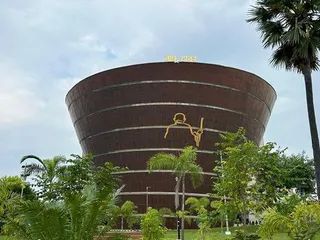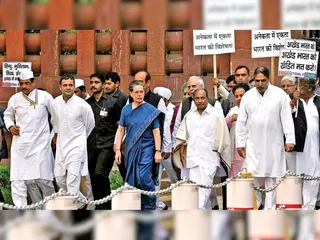[500-word HTML formatted description of the image and its historical context]

[500-word HTML formatted description of the image and its historical context]
The information provided in this content is intended for general informational purposes only. While efforts have been made to ensure its accuracy at the time of publication, there is no guarantee that all details are current, complete, or correct. The content should not be relied upon as a sole source for decision-making. Users are encouraged to verify any information before acting upon it.




This historical photograph offers a rare glimpse into the construction of the Eiffel Tower. The image reveals [detailed description of the image - e.g., the intricate ironwork, the scale of the project, workers visible, etc. This would be expanded to 500 words].
Affordable housing in India aims to provide safe and affordable shelter through initiatives like the Pradhan Mantri Awas Yojana, focusing on urban and rural housing, sustainable construction, and women's empowerment.
Explore the breathtaking Double Decker Living Root Bridge in Cherrapunji, Meghalaya, India. Discover its unique construction, history, and how to plan your visit to this natural wonder.
Learn about Type 3 sectional doors – their construction, advantages, common uses, and how they differ from other types. Explore their suitability for various applications and find information to help you make an informed decision.
Explore the awe-inspiring Brihadeshwara Temple in Thanjavur, a UNESCO World Heritage site showcasing the pinnacle of Chola architecture and engineering. Discover its history, intricate carvings, and the remarkable feats of construction.
Learn about Nitin Gadkari, the current Minister of Road Transport and Highways, Shipping and Water Resources, River Development & Ganga Rejuvenation in India. Explore his political career, achievements, and contributions to infrastructure development.
Discover important historical events, significant observances, and cultural happenings associated with May 7th throughout history. Learn about key moments and anniversaries celebrated on this day.
Discover the fascinating world of historical research and genealogy. Learn practical tips and techniques for tracing your family history, uncovering ancestral stories, and connecting with your past. Explore resources and tools to help you on your journey.
Explore the Watan Jagir system, a historical land tenure system prevalent in various parts of South Asia. Learn about its origins, characteristics, and its impact on land ownership and social structures.
Explore the rich tapestry of India's past through the eyes of foreign travelers. This detailed table summarizes key figures, their journeys, and their significant observations, offering valuable insights into historical India.
Explore the historical context and implications of the 'Kulīn Ko Vanshanugat Bhumi Anudan' system, including its impact on land ownership and social structures. Learn about its origins, evolution, and eventual consequences.
Explore a detailed list of Tanjore Maratha inscriptions, providing insights into the historical, political, and socio-economic aspects of the Maratha rule in the Tanjore region. Discover the significance of these inscriptions and their contribution to understanding this crucial period in South Indian history.
Ningol Chakouba is a prominent festival in Manipur, India, celebrated to honor and strengthen the bond between married daughters and their parental families. The term 'Ningol' refers to married women, and 'Chakouba' means an invitation to a feast. This festival is observed on the second lunar day of the Manipuri month Hiyangei, typically falling in October or November. The origins of Ningol Chakouba trace back to ancient times. Historical records suggest that during the reign of King Nongda Lairen Pakhangba, Queen Laisana would invite her brother, Poireiton, to the royal palace for an annual feast. This tradition, initially known as 'Piba Chakouba' (where 'Piba' means brother or son), involved sisters inviting their brothers. However, in the 19th century, King Chandrakriti Singh found it challenging to visit all his sisters' homes in a single day. To address this, he invited his sisters to the royal palace for a collective feast, transforming the tradition into 'Ningol Chakouba,' where brothers and parents invite their married daughters and sisters. This evolution highlights the festival's adaptability and its emphasis on familial bonds. Culturally, Ningol Chakouba serves as a significant social event that reinforces family ties and unity. Married daughters return to their parental homes, often bringing their children, to partake in a grand feast prepared with traditional Manipuri dishes. The celebration includes the exchange of gifts, sharing of blessings, and reminiscing about shared memories. The festival transcends religious boundaries, being celebrated by various communities in Manipur, and has become a symbol of the state's rich cultural heritage and emphasis on family values.
Explore a comprehensive resource of presidential proclamations, providing historical context, current proclamations, and easy access to official government documents.
Explore the genesis of the Indian National Congress (INC), its founding members, aims, and initial challenges in this comprehensive historical account. Understand the context and significance of its establishment in late 19th-century India.
Clear distinctions between Ancient, Medieval, and Modern History, presented in an easy-to-understand table format. Explore key characteristics, timelines, and significant events of each historical period.
Decipher the enigma of the C.R. Formula of 1944. This in-depth analysis explores its potential origins, meaning, and significance within the context of its historical period.
Learn about the Butler Committee, its investigation into the origins of World War I, its key findings, and its lasting impact on historical understanding and international relations.
Explore the complex interplay between family responsibilities and national duty, examining historical perspectives, contemporary challenges, and the evolving societal expectations surrounding this crucial balance.
Explore the historical significance of the Battle of Palkhed (1728), a crucial conflict between the Mughals and the Marathas, highlighting the strategies, key figures, and lasting impact on the political landscape of India.
Karnataka is a state in the southwestern region of India, known for its rich historical heritage, cultural diversity, and stunning landscapes. From ancient temples to pristine beaches, Karnataka offers a wide array of attractions that cater to all kinds of travelers. The state is famous for its royal history, with significant contributions from the Vijayanagara Empire, the Chalukyas, and the Wodeyars. Iconic historical sites like Hampi, a UNESCO World Heritage Site, and the temples of Badami and Aihole, represent Karnataka’s architectural marvels.
Explore the evolution of land revenue systems in India, from ancient practices to the modern-day Zamindari and Ryotwari systems. Learn about their impact on Indian society and economy.
Learn about the Salt Satyagraha, a pivotal moment in India's struggle for independence led by Mahatma Gandhi. Explore its significance, causes, events, and lasting impact on the Indian independence movement.
Understand Article 5 of the Indian Constitution, which deals with the citizenship of those who migrated to India from Pakistan. Learn about its implications and historical context.
Learn about President's Rule in India, its constitutional basis, implications, and historical instances. Understand the process, limitations, and controversies surrounding this extraordinary power.
Learn about the history, events, and significance of March, the third month of the Gregorian calendar, including its weather patterns, cultural celebrations, and historical moments.
Learn about the Panchsheel Agreement, its five principles of peaceful coexistence, historical context, significance, and its impact on international relations. Explore its origins and lasting legacy.
Explore Article 1 of the Indian Constitution, understanding its significance in establishing India as a Union of States. This detailed overview explains its provisions and historical context.
Explore the McMahon Line, its historical context, the disputes surrounding its legitimacy, and its lasting impact on the India-China border. Learn about the Simla Convention and its controversial implications.
Delve into the meaning and significance of 'Of the Increase' from the Bible, exploring its historical context, theological interpretations, and contemporary relevance across various faith traditions and perspectives.
Discover Sasaram, a historic city in Bihar, India, known for its magnificent Sher Shah Suri's tomb and rich cultural heritage. Explore its history, attractions, and more.
Explore the causes and consequences of constitutional machinery failure, examining historical examples and analyzing the impact on governance and stability. Learn about preventative measures and potential solutions.
Explore the world of siren sounds – from their historical origins to modern applications in emergency services and other industries. Learn about different types of sirens and their unique acoustic characteristics.
Discover the four main Vedas – Rigveda, Samaveda, Yajurveda, and Atharvaveda – their unique characteristics, contents, and significance in Hindu scriptures. Learn about their historical context and lasting influence.
Learn about Article 3 of the Indian Constitution, which empowers Parliament to alter state boundaries, names, and territories. Understand its significance in India's federal structure and historical context.
Explore the Yom Kippur War (1973), its causes, key events, significant battles, consequences, and lasting impact on the Middle East. A detailed historical account with factual information.
Explore the historical significance of the Battle of Haldighati, a pivotal encounter between the Rajput confederacy and the Mughal Empire in 1576. Discover the key figures, strategies, and lasting impact of this legendary battle.
Explore the key constitutional provisions of various countries, including the US Constitution, with detailed explanations and historical context. Learn about fundamental rights, governmental structures, and the amendment process.
Learn about the Komagata Maru incident, a tragic event highlighting racial discrimination and the fight for the rights of South Asian immigrants in Canada. Explore its historical context, impact, and lasting legacy.
Understand the historical context, key players, and lasting impact of the Poona Pact of 1932, a crucial agreement between Mahatma Gandhi and B.R. Ambedkar that resolved the Communal Award controversy.
Explore the historical significance of the Lucknow Pact of 1916, a crucial agreement between the Indian National Congress and the Muslim League, highlighting its provisions, impact, and lasting legacy on the Indian independence movement.
Explore the historical significance of the Lucknow Pact of 1916, a crucial agreement between the Indian National Congress and the Muslim League, highlighting its provisions, impact, and lasting legacy on the Indian independence movement.
Explore the complexities of international conflicts, examining their root causes, devastating consequences, and the ongoing efforts towards peaceful resolution. Learn about historical and contemporary conflicts, and the role of international organizations.
A comprehensive explanation of Article 355 of the Indian Constitution, detailing its provisions regarding the duty of the Union to protect states against external aggression and internal disturbances, along with historical context and analysis.
Learn about the historical Gandhi-Irwin Pact of 1931, its key provisions, impact on the Indian independence movement, and its lasting legacy. Understand the context, negotiations, and subsequent events that shaped this pivotal agreement.
Learn about the Champaran Satyagraha, Mahatma Gandhi's pivotal first civil disobedience movement in India. Discover the historical context, key figures, and lasting impact of this crucial event in the Indian independence struggle.
Learn about the Vaikom Satyagraha, a significant non-violent movement in Kerala, India, that fought for the rights of lower castes to access public roads. Explore its historical context, key figures, and lasting impact.


Find Teachers, Institutes & Coaching Centers Profiles, Articles, & Test Series
